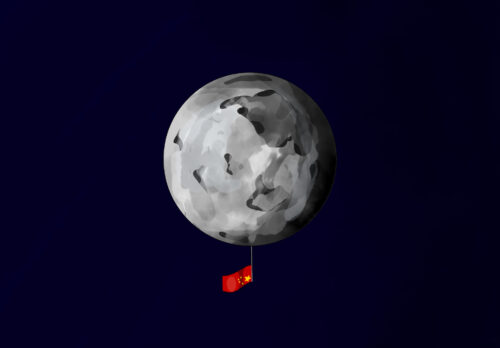China to double the size of Tiangong space station
China just offered international partners the chance to participate in its lunar programs. And yesterday, it announced plans to expand Tiangong, its space station that was completed in 2022 and is currently home to three astronauts.

China has announced plans to double the size of its space station in the near future as it continues to step up rivalry with the U.S. in an accelerating global space race.
The ambitious plan was made public Wednesday by the China Academy of Space Technology (CAST), a unit of China’s main space contractor, at the 74th International Astronautical Congress in Baku, Azerbaijan. Zhāng Qiáo 张峤, a head designer of CAST, said at the event that China aims to expand its Tiāngōng 天宫 (“Heavenly Palace”) space station to six modules from the current three in the coming years.
He added that the operational lifetime of Tiangong will exceed 15 years, more than the 10 years previously announced.
Tiangong, China’s self-built space station in low Earth orbit, has been fully functional since late 2022, after China added its third module. The first module of the space station, Tiānhé (“Harmony of the Heavens”), went into space in April 2021, while Wèntiān 问天 (“Quest for the Heavens”) followed more than a year later in July 2022.
As it stands now, Tiangong is about a quarter of the size of the International Space Station (ISS), the largest spacecraft in orbit around Earth and an international undertaking led by the U.S.’s National Aeronautics and Space Administration (NASA). Tiangong currently hosts a maximum of three astronauts at an orbital altitude of up to 450 kilometers (280 miles), whereas the ISS is capable of carrying up to seven people at a time.
After its expansion to six modules, the Chinese space station will still just be 40% of the mass of the ISS. But as the ISS, which has been in space for almost 22 years, is scheduled to retire in 2030, about the same time China has said it expects to become “a major space power,” Tiangong is on the course to be an alternative platform for near-Earth missions for astronauts from different countries.
As part of its escalating efforts to boost its presence in space, China has been inviting international partners to join forces. Last week, the China National Space Administration (CNSA) opened up its upcoming Chang’e-8 Moon mission, an unmanned lunar expedition slated to launch in 2028, to global cooperation on spacecraft launches, and exploration of the Moon.
The future of China’s international space projects
Seen by Chinese officials as the country’s answer to the ISS, Tiangong has been advertised to space agencies around the world as an international hub for innovation and discovery. But in a blow to China’s aspirations for space diplomacy, the European Space Agency (ESA) said in January that it had to walk back a plan to send some of its astronauts to Tiangong, citing the lack a “political” green light, and budget constraints.
In response to ESA’s decision, Chinese state-owned nationalist rag Global Times wrote at the time, “Giving up cooperation with China in the manned space domain is clearly short-sighted, which reveals that the U.S.-led camp confrontation has led to a new space race.”
In May, China launched three astronauts to Tiangong, kicking off its fifth manned mission to the space station since 2021. In a risky experiment last month, the Shenzhou-16 astronauts lit a candle and created a spherical open flame during a live lecture broadcast from Tiangong. This test would likely be forbidden aboard the ISS, where strict fire safety measures are enforced in part as a response to a significant fire on the Russian space station Mir in 1997.
China isn’t the only country that wants to take a leading role in space. Instead of building another space station where the ISS is, NASA has teamed up with Canada, Europe, and Japan’s space agencies to develop the Lunar Gateway, which would be the first planned extraterrestrial space station in lunar orbit. Located near the Moon, nearly 240,000 miles away from the Earth, the Lunar Gateway is expected to play a pivotal role in NASA’s plans to maintain a human presence on the Moon and eventually send astronauts to Mars and beyond. Elon Musk’s SpaceX also has lunar ambitions.
Meanwhile, Russia, a participant in the ISS, also has its own plan for space diplomacy. It has encouraged Moscow’s partners in the BRICS group — Brazil, India, China, and South Africa — to participate in the construction of a joint module for its planned orbital space station. Roscosmos, the Russian space agency, Roscosmos, unveiled a physical model of a planned new Russian-built space station, suggesting Moscow is serious about abandoning the ISS and going it alone.







